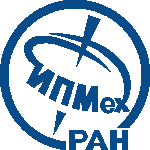
|
ИСТИНА |
Войти в систему Регистрация |
ИПМех РАН |
||
Identification of amyloidogenic regions in S1 ribosomal proteins from Thermus thermophilus and Mycoplasma mobileдоклад на конференции
- Авторы: Galzitskaya O., Grishin S., Dzhus U., Selivanova O., Glyakina A., Deryusheva E., Machulin A., Suvorina M., Surin A.
- Международная Конференция : 44th Congress of the Federation-of-European-Biochemical-Societies (FEBS)
- Даты проведения конференции: 6-11 июля 2019
- Дата доклада: 1 июля 2019
- Тип доклада: Стендовый
- Докладчик: Galzitskaya O.
- Место проведения: Краков, Польша
-
Аннотация доклада:
S1 is the largest protein component of bacterial ribosomes. Thermus thermophilus protein S1 includes five copies of the RNA-binding motif (so-called S1 motif) including about 70 amino acid residues separated by loops of 10 to 20 residues. Unlike this, Mycoplasma mobile protein S1 has a length of 111 residues and contains a single S1 motif. The aim of this research was to study the process of amyloidogenesis S1 proteins from Thermus thermophilus and Mycoplasma mobile. We have used bioinformatics programs (FoldAmyloid, ArchCandy, PASTA2.0, Waltz, and AGGRESCAN) and determined the percent amyloidogenicity of S1 proteins from the studied organisms. Amyloidogenic regions predicted by the bioinformatics tools were compared with the results of limited proteolysis followed by high-performance liquid chromatography and tandem mass spectrometry. Proteins were isolated and purified by dialysis under different buffer conditions. The sizes of protein particles and their associates were determined, using the method of measuring the dynamic light scattering, and correlograms of aggregate accumulation with increasing temperature were received. Electron microscopic images of preparations of S1 protein aggregates were obtained for each organism. The formation of protein aggregates was characterized using the spectra and kinetics of thioflavin T binding. Thus, we showed that S1 proteins from Thermus thermophilus and Mycoplasma mobile are able to form polymorphic aggregates. We have suggested that the S1 motif may not only be RNA-binding motif, but a domain involved in protein aggregation. This study was supported by the Russian Science Foundation (project no. 18-14- 00321).
- Добавил в систему: Гришин Сергей Юрьевич